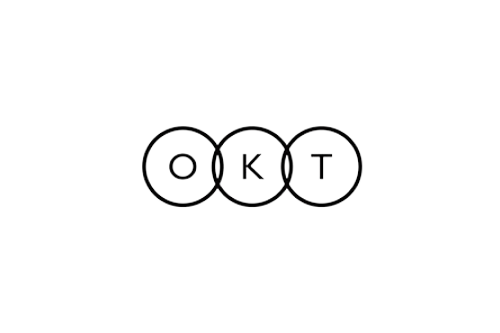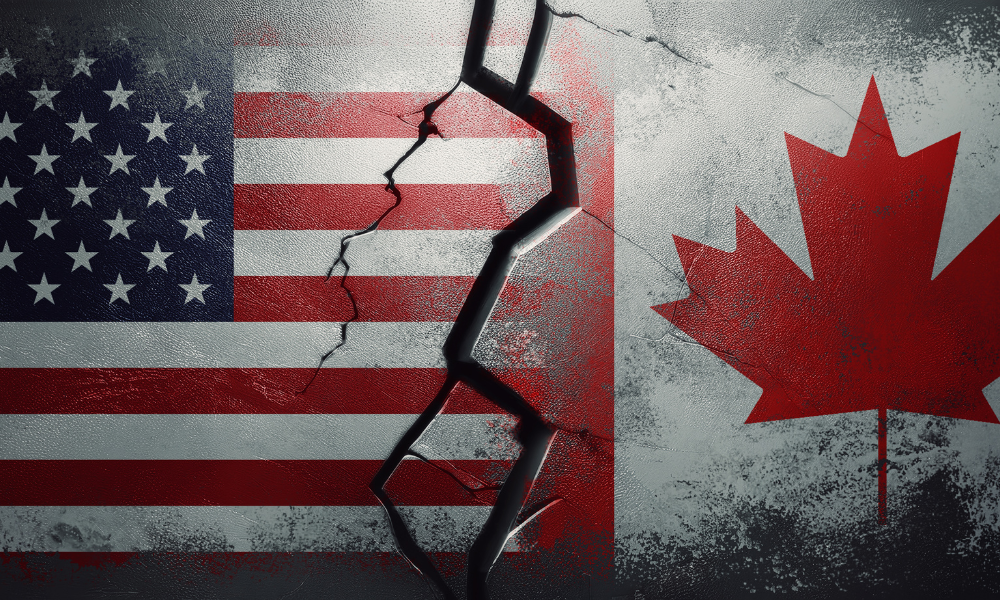There were many significant developments in Aboriginal law for the year 2021. Here are some highlights:
- The Supreme Court of Canada decided the case Southwind v. Canada, concerning how to compensate First Nations for historic breaches of fiduciary duty. That case is explained in detail below.
- The Supreme Court of Canada decided R v. Desautel. That case involved an Indigenous person, who was a US citizen and resident and was a descendant of a group whose traditional territory straddled the Canada/US border. That group had moved to the US in about 1870. The Court ruled that, on these facts, Desautel was a member of one of the “Aboriginal peoples of Canada” within the meaning of the Constitution Act, 1982, and that he had Aboriginal hunting rights in Canada. On the facts, the Court did not find it necessary to decide whether it was possible for an Aboriginal right to be lost or abandoned by non-use, nor whether an Aboriginal harvesting right held by a non-resident of Canada implied an Aboriginal right to cross the border.
- The BC Supreme Court decided Yahey v. BC. This is an important corollary to the 2005 Supreme Court of Canada case Mikisew Cree First Nation v. Canada (Minister of Heritage), 2005 SCC 69. In Mikisew, the Court interpreted Treaty 8, which included both a hunting right and a provision that the hunting right did not apply to lands “taken up” for “settlement, mining, lumbering, trading or other purposes”. Mikisew ruled that Treaty 8 First Nations had a right to be consulted and, if appropriate, accommodated when lands were to be so “taken up”. Mikisew also noted that if the time comes where so much land is “taken up” that no meaningful right to harvest remains, that would amount to a prima facie treaty infringement which would require justification if it were to be permitted at all. Generally, provincial governments have interpreted Mikisew as allowing them quite a free hand in authorizing developments. The obvious question, however, remains: at what point would this threshold of “no meaningful right” be passed? Further, how could this be determined in the event of a lengthy series of instances of “taking up” land, which individually would not pass the threshold, but which could have a cumulative effect? This was the situation presented by Yahey. In Yahey the Court was indeed satisfied that the province of BC had taken up lands over a period of many years (by allowing industrial development at an extensive scale) to the point that there were no longer sufficient and appropriate lands in the Blueberry River First Nation’s territory to allow for the meaningful exercise by Blueberry of its treaty rights. The Court therefore found a breach of Treaty which was not justified. The Court prohibited the province from authorizing further activities which would breach Blueberry’s treaty rights. This is a strong signal to provinces to be more respectful of treaty rights.
- Parliament passed the United Nations Declaration on the Rights of Indigenous Peoples Act. Despite the name of the statute, the UNDRIP Act does not implement UNDRIP directly into Canadian law. Rather, it establishes a process that could implement UNDRIP. The process set out appears to be in two parts: one to make federal laws consistent with UNDRIP, and one to develop an action plan to achieve the objectives of UNDRIP. It might be observed that these processes should be merged or at least better inter-linked. Despite the support of UNDRIP by Indigenous people, the UNDRIP Act has attracted criticism because of weaknesses in the processes it set up and concern about whether the processes will really have sufficiently meaningful Indigenous participation. It remains to be seen what the processes will lead to. It should also be noted that the processes under the Act would apply to federal laws only. The Act would not affect provincial laws. If provincial laws are to be made consistent with UNDRIP, this would require a separate process with each province. British Columbia now has such legislation in place.
- A major news story in 2021 was the announced discovery of over 200 unmarked burials on the site of the Kamloops Indian Residential School. This was deeply distressing to Indigenous people, although probably not very surprising. It did seem to be a huge surprise to the Canadian public, however, leading to an outpouring of sorrow and regret. This sort of event has the potential to trigger a groundswell of public support for meaningful reconciliation. It remains to be seen if this will materialize, will be sustained, and will encompass the kind of agenda that Indigenous people seek.
- Canada agreed to settle a class action concerning prolonged drinking water advisories on First Nations across Canada. The settlement contemplates a commitment of approximately $8 billion, with associated implementation commitments. This is an important milestone for those First Nations who have suffered from lack of access to safe drinking water. Once implemented, it would significantly improve conditions on many First Nation reserves. It remains to be seen how smoothly the implementation will proceed.
- Canada and the First Nations Child and Family Caring Society reached an agreement in principle to resolve decades of discriminatory treatment of Indigenous youth. This followed 15 years of litigation before the Canadian Human Rights Tribunal (CHRT). The CHRT concluded that the resources provided for Indigenous child and family services were systemically and significantly less than the resources provided for the same services provided for non-Indigenous children. The CHRT issued repeated orders finding discrimination, and ruling that Canada was not complying with its orders. Finally, Canada stopped trying to appeal CHRT orders and began negotiating. The agreement in principle provides for a commitment of $40 billion: $20 billion as compensation for past harms suffered by individual Indigenous families as a result of insufficient services provided and $20 billion for reforming the system to prevent future discrimination. This has the potential to improve life in Indigenous communities significantly, but, as said by Cindy Blackstock of the First Nations Child and Family Caring Society, at this point it is just “words on paper”. Time will tell if a final agreement can be reached and implemented wholeheartedly.
All of the above developments are significant, but I have decided to focus on Southwind.
Southwind v. Canada
In Southwind v. Canada, 2021 SCC 28, the facts before the Court were that Lac Seul First Nation’s reserve was flooded in 1929 by a hydro dam planned by Canada, Ontario, and Manitoba. Canada took no steps to protect the reserve, to negotiate a surrender of the reserve, or even to expropriate the reserve. No compensation was paid to the First Nation at the time. By the time the case reached the Supreme Court of Canada, it was accepted by all parties that Canada had breached its fiduciary duty to Lac Seul, and the issue was what was the proper measure of compensation.
In my view, Southwind changes everything and changes nothing about compensation for breach of fiduciary duty in the Indigenous context. I say it changes nothing because it just affirms principles of equity which have been established for at least 200 years. I say it changes everything because there had been a debate about whether or not to apply the principles of equity in an Indigenous context the same way they would be applied in other contexts, or to apply them in a separate, unique, and, in my view, intellectually dishonest way, which would result in First Nations getting a small fraction of the compensation that others would receive in comparable situations. This debate has now been decisively settled, to the considerable benefit of First Nations.
In order to deal properly with the issue of compensation, the Court had to review the content of the fiduciary duty and what obligations it imposed. While, similarly, at one level, this simply reaffirmed established equitable doctrine, it did so in a way that should dispel attempts to water down the fiduciary concept in Indigenous contexts. Fiduciary duty is a doctrine from the branch of law called equity. We now have a unified system of courts of common law and equity. However, equity developed separately, and in different courts, from common law courts, and retains its own distinctive forms of reasoning and its own unique goals. Many Canadian lawyers, and even judges, do not fully appreciate the significance of this, and therefore sometimes fail to apply equitable principles properly, especially in the Indigenous context. It is very helpful, then, that the Supreme Court reviewed and re-affirmed the basic principles of fiduciary law and how they should apply to Indigenous people.
For example, Southwind reaffirmed that the purpose of fiduciary duty is to protect socially important relationships. Although the effect of fiduciary law protects the beneficiaries in a fiduciary relationship from exploitation, this is actually secondary to protecting the relationship. This affects the way the law approaches its task. Most lawyers have an instinct to balance the interests of persons, as if they were notionally independent and equal actors. However, the premise of fiduciary law is that the fiduciary is held to the standard of acting in the best interests of another. This is not a balancing exercise ― it places singular attention on the conduct of the fiduciary and whether or not the fiduciary placed the interest of the beneficiary above all others.
The Supreme Court first applied the concept of fiduciary duty to Crown–Indigenous relations in the ground-breaking case Guerin v. R, [1984] 2 SCR 335. In doing so it laid to rest the idea that the Crown’s duties to Indigenous people were merely “political” and legally unenforceable. Southwind has now re-affirmed the Guerin principle, and reinforced it against attempt to soften the rigours of fiduciary duty. In the Indigenous context, fiduciary duty is rooted in honour of the Crown and the overarching goal of reconciliation between the Crown and Indigenous peoples. That in turn arises from the Crown’s assertion of sovereignty and control over lands and resources formerly controlled by Indigenous people. It was with the Royal Proclamation of 1763 that the Crown undertook discretionary control over pre-existing Indigenous land interests and interposed itself between Indigenous people and settlers. With that control came a fiduciary duty. Even though the Crown has competing priorities, Southwind emphasized that these do not cause the fiduciary duty to melt away. There had previously been some judicial support for the “many hats” idea: that the Crown wore “many hats” and simply had to balance the duties it owed to Indigenous people with duties it owed to other members of the public. Southwind has now repudiated the “many hats” idea or, at very least, significantly constrained it.
Southwind also reiterated that a Crown fiduciary duty to Indigenous people is not a matter of an unending paternalistic relationship ― the fiduciary duty emerged when the military capacities of Indigenous people were strong and the Crown needed to reduce the risk of conflict between Indigenous people and settlers. Continuing to protect the Crown–Indigenous relationship so as to reconcile Crown sovereignty with the pre-existing rights of Indigenous peoples then remains of fundamental importance to Canadian law.
All this is not to say that the Crown’s obligations are identical whenever an Indigenous group is involved. Southwind noted that the actual content of the duty can vary with the context, and, indeed, not all aspects of the Crown–Indigenous relationship are fiduciary. But it is important that the context and the starting point is that the Crown has heavy obligations to Indigenous peoples.
More specifically, where the Crown is exercising control over a First Nation’s land, or over Aboriginal or treaty rights, there is a strong fiduciary duty. Southwind noted that this applies whether or not the reserve is located on land within the traditional territory of the First Nation, and applies to rights which are not land rights. Where there is a treaty or Aboriginal right of any kind under the control of the Crown, there is a strong fiduciary duty to protect and fulfil it.
In Southwind, the land in question was reserve land. The Court noted that this enhances the importance of the land to a First Nation, and thus the content of the fiduciary duty. Generally, the Crown’s fiduciary duty to an Indigenous group includes loyalty, good faith, and full disclosure. Where reserve land is involved, the duty includes protecting and preserving the First Nation’s land interest from exploitation, protecting against improvident bargains, managing the process to advance the best interests of the First Nation, and ensuring that the First Nation freely consents to any surrender. If the Crown must expropriate reserve land, it has a obligation to take the minimum interest possible.
Having reviewed this background, the Southwind Court turned to the issue of compensation. Important background to this is equity calculates compensation in a way significantly different from the common law. Although this was not in dispute, nor were the fundamentals of how equity calculates compensation, the application of these principles was strongly in dispute. By way of background, some of the principles of equitable compensation are that: 1) a loss compensated must be caused by the fiduciary’s breach, but, unlike the common law, unforeseeable losses, including lost opportunities, can be compensated; 2) equity is especially concerned with deterring wrongful conduct by fiduciaries; 3) losses are assessed at the date of trial, with the full benefit of hindsight, in contrast to the common law approach of assessing the loss at the time it occurred; 4) concerns about a beneficiary having a “windfall” are misplaced; 5) there is a presumption that a beneficiary would have made the most favourable use of property; and 6) a fiduciary who did not disclose facts the beneficiary was entitled to know may not argue that the result would have been the same if proper disclosure had been made.
A key debate about equitable compensation has been how to bring historic losses forward to today’s value. Now, in everyday life, if one owes money to someone else, one would expect to pay interest on it. This interest ordinarily compounds ― that is, the interest from one year is added to the amount owing and this contributes to the new amount on which interest is charged the next year. This principle is behind all commercial lending. One who is owed money is compensated for the loss of opportunity to use that money. It is therefore somewhat startling that until recently Canada’s position has been to distinguish between money that, if paid, hypothetically would have been consumed and that which would have been invested. Canada’s position in specific claims negotiations has been to assume that only 20% of money that ought to have been paid would have been invested and that therefore only 20% of the amount owing would accrue compound interest. Canada has assumed the other 80% would have been consumed, and rather than accruing compound interest, would only be adjusted for inflation. This does not accord with real life. In no other context is it an acceptable excuse to say, “If I had paid you at the time, you just would have wasted the money, so now I don’t have to pay you interest.” It would also be clearly impossible to borrow money on such terms. What someone owed money would do with it if they were paid is simply irrelevant to repaying a debt. In effect, Canada has been borrowing from First Nations the money which would compensate them for losses caused by Canada’s breaches of fiduciary duty. Yet Canada has been suggesting it should pay a highly discounted amount for this.
In Southwind, at trial, Canada argued that the First Nation should receive no compensation at all for money that (on their hypothetical economic model) would have been consumed. The trial judge rejected this and ruled that historic losses should be brought forward to today’s value by compounding 100% of the historic loss at the interest rates paid by the Indian Trust Accounts. Interestingly, Canada did not appeal that part of the ruling. The Supreme Court in Southwind, however, did comment that it took no issue with the approach of the trial judge.
On the point of whether to adjust compensation for hypothetical consumption, the approach to compensation is not especially new. It is, in my view, just a straightforward application of the principles of equitable compensation. Further, the Specific Claims Tribunal had already repeatedly rejected the model of no compensation for supposed consumption in cases in 2016 and 2021. Presumably this idea can now be considered no longer tenable. If Canada does not adjust its position in Specific Claims negotiations, First Nations will usually decide to litigate instead.
The Supreme Court in Southwind, in fact, went a step further. It rejected using measures of expropriation valuation for compensation for breach of fiduciary duty. If land is expropriated, the owner is compensated for the value of the land on the basis of its highest and best use at the time of expropriation, but the value of the land for the use for which it was expropriated is not considered. However, because of the unique nature of reserve land, and its fundamental importance to First Nations, the Court decided that the Crown’s fiduciary duty in such a case must capture the full potential value of the land, including its value for the use it was taken (hydroelectric generation, in that case). This is a floor, not a ceiling. There may, in fact, be situations where the highest and best use of the land is for a use more valuable than the use to which the land was actually put.
A further point addressed in Southwind is that equitable remedies are considered “discretionary”. This does mean that a judge applying an equitable remedy may consider more factors in granting remedies than the common law might consider, and may have some scope in how equitable principles are applied. It is not a matter of simply applying a formula. However, this does not mean that a judge may approach the matter on any intuition without constraint. There has been a long history of debate about the nature of equity. While it is more flexible than common law, equitable cases must still be decided on principles, and different judges are expected not to come to vastly different results in similar cases. Simply by setting aside the award made by the trial judge, Southwind made clear that there were substantive constraints on the court’s discretion.
I have one closing comment: Canada’s representatives often invoke, explicitly or implicitly, a constraint of affordability on negotiated settlements or court awards for historical wrongdoing by the Crown in relation to Indigenous people. In response to this, first, Southwind explicitly stated that competing priorities do not cause the fiduciary duty to melt away. Secondly, the pandemic has demonstrated that when a priority is pressing enough, expenditures in the hundreds of billions of dollars, previously considered far beyond the realm of affordability, can be made, and in very short order. This reveals that statements of affordability are really more matters of priority than of capacity. It is therefore now evident that a statement that Canada cannot afford to fully compensate Indigenous people for a historical wrong really amounts to saying that Canada just does not consider doing so to be a high enough priority. Such a statement should not be given much weight by a court.





